Books by Parul Pandya Dhar
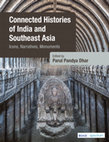
SAGE , 2023
This book is an open access publication. It can be downloaded from www.sagespectrum.com. This boo... more This book is an open access publication. It can be downloaded from www.sagespectrum.com. This book is licensed under the terms of the Creative Commons Attribution-NonCommercial-ShareAlike 4.0 International License (https://creativecommons.org/licenses/by-ncsa/4.0/), which permits copying, adapting, remixing, transforming and building upon the material and redistributing the material in any medium or format. You must give appropriate credit, provide a link to the license, and indicate if changes were made. You may do so in any reasonable manner, but not in any way that suggests the licensor endorses you or your use. You may not use the material for commercial purposes. If you remix, transform, or build upon the material, you must distribute your contributions under the same license as the original. You may not apply legal terms or technological measures that legally restrict others from doing anything the license permits. The images and third-party material in this book are included in the book's Creative Commons licence, unless indicated otherwise. If the material is not included in the book's Creative Commons licence, you will need to obtain permission directly from the copyright holder. If your intended use of any material included in the book's Creative Commons licence is not permitted by statutory regulation or exceeds the permitted use, you will need to obtain permission from SAGE. The use of general descriptive names, registered names, trademarks, service marks, etc. in this publication does not imply, even in the absence of a specific statement, that such names are exempt from relevant protective laws and regulations and therefore free for general use.
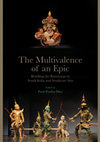
The Multivalence of an Epic: Retelling the Ramayana in South India and Southeast Asia, edited by Parul Pandya Dhar, 2021
The Rāmāyaṇa traditions of South India and Southeast Asia are examined at multiple levels in this... more The Rāmāyaṇa traditions of South India and Southeast Asia are examined at multiple levels in this volume. The research presented here offers in-depth investigations of chosen moments in the development of the epic tradition together with broader trends that help in understanding the epic’s multivalence. The journey and localization of the Rāmāyaṇa is explored in its manifold expressions – from classical to folk, from temples and palaces to theatres and by-lanes in cities and villages, and from ancient to modern times. Regional Rāmāyaṇas from different parts of South India and Southeast Asia are placed in deliberate juxtaposition to enable a historically informed discussion of their connected pasts across land and seas. The three parts of this volume, organized as visual, literary, and performance cultures, discuss the sculpted, painted, inscribed, written, recited, and performed Rāmāyaṇas. A related emphasis is on the way boundaries of medium and genre have been crossed in the visual, literary, and performed representations of the Rāmāyaṇa. These are rewarding directions of research that have thus far received little attention. Bringing together 19 well-known scholars in Rāmāyaṇa studies from Cambodia, Canada, France, India, Indonesia, Malaysia, Singapore, Thailand, UK, and USA, this thought-provoking and elegantly illustrated volume engages with the inherent plurality, diversity, and adaptability of the Rāmāyaṇa in changing socio-political, religious, and cultural contexts and with shifting norms, tastes, traditions, and ideologies.

Contributors:
Catherine B. Asher, Frederick Asher, Gouriswar Bhattacharya, Nachiket Chanchani, An... more Contributors:
Catherine B. Asher, Frederick Asher, Gouriswar Bhattacharya, Nachiket Chanchani, Anna L. Dallapiccola, Hemant Dave, Devangana Desai, Parul Pandya Dhar, Thomas E. Donaldson, Adalbert J. Gail, Pika Ghosh, Kamal Giri, Adam Hardy, Arvind P. Jamkhedkar, Kumud Kanitkar, Kirit L. Mankodi, Stephen Markel, Michael W. Meister, Gerd J.R. Mevissen, George Michell, Jürgen Neuss, Pratapaditya Pal, Suraj A. Pandit, Ratan Parimoo, Alka Patel, Tamara I. Sears, S. Settar, Snehal Shah, Shanti S. Sinha, Walter Spink, Doris Meth Srinivasan, Maruti Nandan Tiwari, Anila Verghese, and Corinna Wessels-Mevissen.
This volume is a tribute to Professor M.A. Dhaky’s profound and influential scholarship by an international community of well-known scholars in the field of South and Southeast Asian temple art and architecture. The thirty-two essays that make this book unfold many layers of the temples’ imagery, taking a broad view and traversing religious, cultural, and temporal boundaries. While a majority of these are rooted in India, Afghanistan, Pakistan, Tibet, Nepal, Cambodia, and Vietnam also figure prominently.
Preceded by valuable insights into M.A. Dhaky’s encyclopaedic writings, the volume is configured along six sub-themes inspired by his contributions to the discipline. These include the architectonics of temples, their varied materials and milieus, stylistics, patronage and transregional connections; studies of architectural elements in culture-specific contexts; inter-relationships between sculpture and architecture in the temple’s larger narrative; the embodiment of cult icons; other, non-cultic manifestations on the temple; ritual observances and performance traditions. Several of the essays move in and out of M.A. Dhaky’s writings, building upon themes addressed by him, extending his methods to newer materials, regions, and time-frames, and charting fresh paths that extend the orbit of temple studies.
Scholars and interested readers will find in this volume a thoughtful and cohesive collection of the most recent and insightful research on art historical aspects of South and Southeast Asian temples by the finest minds engaged in the field.

The centuries-old interactions between the different regions of Asia took various forms including... more The centuries-old interactions between the different regions of Asia took various forms including the migration of people, trade in raw materials and goods, and the exchange of religious, literary, and aesthetic ideas and forms. Covering diverse aspects of these interactions, this volume studies the connections between India and other parts of Asia including China and Southeast Asia.
It, therefore, approaches the subject of Asian cultural interactions during the pre-modern and early modern periods through the prism of politics, art, religion, and trade. By bringing together these inter-related aspects of cultural encounters, it explores the complex connected histories of the Asian people in a comprehensive manner.
The diversities of cultural interactions addressed in this book range from issues of war and diplomacy to trade, trade routes and ship-wrecks; from the making of grand monumental edifices to the circulation of tiny terracottas and coveted carpets, and from the religious to the secular domains in the exchange of cultural ideas and forms. Crucial for a comprehensive understanding of contemporary networks between the Indian subcontinent and various other parts of Asia, this work shows that interactions across cultures in pre-modern Asia were motivated not only by commercial but also cultural ties and explores the historical context in which they took place.
Papers by Parul Pandya Dhar
Handbook on Urban History of Early India, edited by Aloka Parasher Sen, Singapore: Springer Nature. 978-981-97-6229-3., 2024
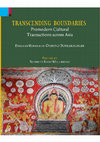
Transcending Boundaries: Premodern Cultural Transactions Across Asia, Essays in Honour of Osmund Bopearachchi, edited by Susmita Basu Majumdar, Delhi: Primus Books. ISBN: 978-93-6177-059-3., 2024
This chapter sets the span for longue durée contacts between India and Cambodia and highlights th... more This chapter sets the span for longue durée contacts between India and Cambodia and highlights the antiquity, history, and historiography of these cross-cultural and trans-national encounters (Map 37.1). 1 It brings the discussion forward from ancient interactions to modern perceptions of the connected histories of two nations-Cambodia and India-in popular and political imaginations. It explores the deep histories of an Asia that was interconnected long before its encounter with European colonial powers. In so doing, it moves away from insular histories by adopting a transregional perspective that draws as much from the visuality and materiality of historical evidence as it does from written records. 2 The chapter also takes a few steps forward in offering a corrective to the tendency in modern scholarship of viewing SouthEast Asia as though it were a monolithic or unified entity. Although trans-regional or connected histories across the eastern Indian Ocean are being emphasized here, I consider it equally important to draw attention to subregional diversities that struggle for space within the modern construct of SouthEast Asia. Despite shared cultural markers among its sub-regions, SouthEast Asia is not, and has never been, politically, geographically,
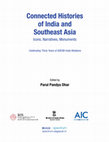
Connected Histories of India and Southeast Asia: Icons, Narratives, Monuments, edited by Parul Pandya Dhar, SAGE Publications. 2023, 2023
This book is an open access publication. It can be downloaded from www.sagespectrum.com. This boo... more This book is an open access publication. It can be downloaded from www.sagespectrum.com. This book is licensed under the terms of the Creative Commons Attribution-NonCommercial-ShareAlike 4.0 International License (https://creativecommons.org/licenses/by-ncsa/4.0/), which permits copying, adapting, remixing, transforming and building upon the material and redistributing the material in any medium or format. You must give appropriate credit, provide a link to the license, and indicate if changes were made. You may do so in any reasonable manner, but not in any way that suggests the licensor endorses you or your use. You may not use the material for commercial purposes. If you remix, transform, or build upon the material, you must distribute your contributions under the same license as the original. You may not apply legal terms or technological measures that legally restrict others from doing anything the license permits. The images and third-party material in this book are included in the book's Creative Commons licence, unless indicated otherwise. If the material is not included in the book's Creative Commons licence, you will need to obtain permission directly from the copyright holder. If your intended use of any material included in the book's Creative Commons licence is not permitted by statutory regulation or exceeds the permitted use, you will need to obtain permission from SAGE. The use of general descriptive names, registered names, trademarks, service marks, etc. in this publication does not imply, even in the absence of a specific statement, that such names are exempt from relevant protective laws and regulations and therefore free for general use.
Connected Histories of India and Southeast Asia: Icons, Narratives, Monuments, edited by Parul Pandya Dhar, SAGE Publications., 2023
Arts Asiatiques vol. 77., 2022
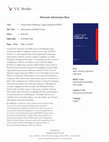
Twenty Years of Mekong-Ganga Cooperation: Achievements and Way Forward. Edited by Prabir De. New Delhi: Vij Books. , 2022
The Mekong-Ganga Cooperation (MGC) completed twenty years in 2020. The MGC initiative is a sub-re... more The Mekong-Ganga Cooperation (MGC) completed twenty years in 2020. The MGC initiative is a sub-regional cooperation organisation comprising India and five ASEAN countries, namely, Cambodia, Lao PDR, Myanmar, Thailand and Vietnam. To commemorate the 20 years of establishment of MGC, the Indian Council of World Affairs (ICWA) in collaboration with the ASEAN-India Centre (AIC) at Research and Information System for Developing Countries (RIS) organised an international conference entitled "Twenty Years of Mekong-Ganga Cooperation (MGC)" on 5-6 November 2020 at New Delhi in virtual mode. This volume is an outcome of the aforesaid conference and examines the connected past, present, and future of MGC. This commemorative volume presents a selected set of papers, which were presented at the aforesaid conference. Although the economic engagements between India and Mekong have been limited, there is further scope to scale up our economic relations. This volume shows the path to strengthen the MGC partnership in the third decade of its establishment. This book will serve as a valuable resource for policymakers, research scholars, practitioners and regional cooperation specialists.
The Multivalence of an Epic: Retelling the Ramayana in South India and Southeast Asia, ed. Parul Pandya Dhar, 2021
The Multivalence of an Epic: Retelling the Ramayana in South India and Southeast Asia, ed. Parul Pandya Dhar, 2021
Locating Pleasure in Indian History: Prescribed and Proscribed Desires in Visual and Literary Cultures, ed. Seema Bawa, Bloomsbury. , 2021
In Phanigiri: Interpreting an Ancient Buddhist Site in Telangana, ed. Naman P. Ahuja, 152-185. Mumbai: MARG Publications., 2021
ASEAN and India: Partners of Integration in Asia. Proceedings of the 5th Roundtable of the ASEAN-India Network of Think Tanks (AINTT), Jakarta, 2018, ed. Prabir De, pp. 97-110, New Delhi: AIC-RIS. , 2020
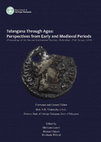
Telangana Through Ages: Perspectives from Early and Medieval Periods, 2019
Proceedings of the Second International Seminar, 'Telangana through Ages: Perspectives from Anci... more Proceedings of the Second International Seminar, 'Telangana through Ages: Perspectives from Ancient and Medieval Periods, Hyderabad, edited by Shrikant Ganvir, Hemant Dalavi and Harshada Wirkud (General Editor: N.R. Visalatchy), pp. 48-62. Hyderabad: Department of Heritage, Telangana, 2019
The central focus of this paper is the dramatic discovery in the year 2002/3 of architraves of a free-standing, post-and-lintel type of limestone toraṇa (arched portal) of exceptional beauty from the Phanigiri Buddhist complex in the State of Telangana in South India. The Phanigiri toraṇa holds a very special place in the history of early Indian architecture because it has no surviving parallel in all of Deccan and South India. In this article, I discuss the historical importance of this unique toraṇa in the context of Buddhist visual culture at Phanigiri and next, analyse its place in early Indian Buddhist art and architecture. Integrating more recent field documentation, research, and a close study of the fragments with my earlier work on toraṇas, a reconstruction of the Phanigiri toraṇa is proposed.
Champa: Territories and Networks of a Southeast Asian Kingdom, Proceedings of an international conference, New Research in Historical Campā Studies, edited by Arlo Griffiths, Andrew Hardy and Geoff Wade, Paris: Études thématiques de l’EFEO no. 31, pp. 355-373., 2019
Dhar, Parul Pandya, 2019. Pride and Penitence of an Anti-Hero: Rāvaṇānugraha as Motif and Metapho... more Dhar, Parul Pandya, 2019. Pride and Penitence of an Anti-Hero: Rāvaṇānugraha as Motif and Metaphor in India and Campā, in Champa: Territories and Networks of a Southeast Asian Kingdom, Proceedings of an international conference, New Research in Historical Campā Studies, edited by Arlo Griffiths, Andrew Hardy and Geoff Wade, Paris: Études thématiques de l’EFEO, pp. 355-373.
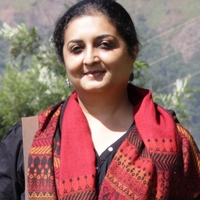










Uploads
Books by Parul Pandya Dhar
Catherine B. Asher, Frederick Asher, Gouriswar Bhattacharya, Nachiket Chanchani, Anna L. Dallapiccola, Hemant Dave, Devangana Desai, Parul Pandya Dhar, Thomas E. Donaldson, Adalbert J. Gail, Pika Ghosh, Kamal Giri, Adam Hardy, Arvind P. Jamkhedkar, Kumud Kanitkar, Kirit L. Mankodi, Stephen Markel, Michael W. Meister, Gerd J.R. Mevissen, George Michell, Jürgen Neuss, Pratapaditya Pal, Suraj A. Pandit, Ratan Parimoo, Alka Patel, Tamara I. Sears, S. Settar, Snehal Shah, Shanti S. Sinha, Walter Spink, Doris Meth Srinivasan, Maruti Nandan Tiwari, Anila Verghese, and Corinna Wessels-Mevissen.
This volume is a tribute to Professor M.A. Dhaky’s profound and influential scholarship by an international community of well-known scholars in the field of South and Southeast Asian temple art and architecture. The thirty-two essays that make this book unfold many layers of the temples’ imagery, taking a broad view and traversing religious, cultural, and temporal boundaries. While a majority of these are rooted in India, Afghanistan, Pakistan, Tibet, Nepal, Cambodia, and Vietnam also figure prominently.
Preceded by valuable insights into M.A. Dhaky’s encyclopaedic writings, the volume is configured along six sub-themes inspired by his contributions to the discipline. These include the architectonics of temples, their varied materials and milieus, stylistics, patronage and transregional connections; studies of architectural elements in culture-specific contexts; inter-relationships between sculpture and architecture in the temple’s larger narrative; the embodiment of cult icons; other, non-cultic manifestations on the temple; ritual observances and performance traditions. Several of the essays move in and out of M.A. Dhaky’s writings, building upon themes addressed by him, extending his methods to newer materials, regions, and time-frames, and charting fresh paths that extend the orbit of temple studies.
Scholars and interested readers will find in this volume a thoughtful and cohesive collection of the most recent and insightful research on art historical aspects of South and Southeast Asian temples by the finest minds engaged in the field.
It, therefore, approaches the subject of Asian cultural interactions during the pre-modern and early modern periods through the prism of politics, art, religion, and trade. By bringing together these inter-related aspects of cultural encounters, it explores the complex connected histories of the Asian people in a comprehensive manner.
The diversities of cultural interactions addressed in this book range from issues of war and diplomacy to trade, trade routes and ship-wrecks; from the making of grand monumental edifices to the circulation of tiny terracottas and coveted carpets, and from the religious to the secular domains in the exchange of cultural ideas and forms. Crucial for a comprehensive understanding of contemporary networks between the Indian subcontinent and various other parts of Asia, this work shows that interactions across cultures in pre-modern Asia were motivated not only by commercial but also cultural ties and explores the historical context in which they took place.
Papers by Parul Pandya Dhar
The central focus of this paper is the dramatic discovery in the year 2002/3 of architraves of a free-standing, post-and-lintel type of limestone toraṇa (arched portal) of exceptional beauty from the Phanigiri Buddhist complex in the State of Telangana in South India. The Phanigiri toraṇa holds a very special place in the history of early Indian architecture because it has no surviving parallel in all of Deccan and South India. In this article, I discuss the historical importance of this unique toraṇa in the context of Buddhist visual culture at Phanigiri and next, analyse its place in early Indian Buddhist art and architecture. Integrating more recent field documentation, research, and a close study of the fragments with my earlier work on toraṇas, a reconstruction of the Phanigiri toraṇa is proposed.
Catherine B. Asher, Frederick Asher, Gouriswar Bhattacharya, Nachiket Chanchani, Anna L. Dallapiccola, Hemant Dave, Devangana Desai, Parul Pandya Dhar, Thomas E. Donaldson, Adalbert J. Gail, Pika Ghosh, Kamal Giri, Adam Hardy, Arvind P. Jamkhedkar, Kumud Kanitkar, Kirit L. Mankodi, Stephen Markel, Michael W. Meister, Gerd J.R. Mevissen, George Michell, Jürgen Neuss, Pratapaditya Pal, Suraj A. Pandit, Ratan Parimoo, Alka Patel, Tamara I. Sears, S. Settar, Snehal Shah, Shanti S. Sinha, Walter Spink, Doris Meth Srinivasan, Maruti Nandan Tiwari, Anila Verghese, and Corinna Wessels-Mevissen.
This volume is a tribute to Professor M.A. Dhaky’s profound and influential scholarship by an international community of well-known scholars in the field of South and Southeast Asian temple art and architecture. The thirty-two essays that make this book unfold many layers of the temples’ imagery, taking a broad view and traversing religious, cultural, and temporal boundaries. While a majority of these are rooted in India, Afghanistan, Pakistan, Tibet, Nepal, Cambodia, and Vietnam also figure prominently.
Preceded by valuable insights into M.A. Dhaky’s encyclopaedic writings, the volume is configured along six sub-themes inspired by his contributions to the discipline. These include the architectonics of temples, their varied materials and milieus, stylistics, patronage and transregional connections; studies of architectural elements in culture-specific contexts; inter-relationships between sculpture and architecture in the temple’s larger narrative; the embodiment of cult icons; other, non-cultic manifestations on the temple; ritual observances and performance traditions. Several of the essays move in and out of M.A. Dhaky’s writings, building upon themes addressed by him, extending his methods to newer materials, regions, and time-frames, and charting fresh paths that extend the orbit of temple studies.
Scholars and interested readers will find in this volume a thoughtful and cohesive collection of the most recent and insightful research on art historical aspects of South and Southeast Asian temples by the finest minds engaged in the field.
It, therefore, approaches the subject of Asian cultural interactions during the pre-modern and early modern periods through the prism of politics, art, religion, and trade. By bringing together these inter-related aspects of cultural encounters, it explores the complex connected histories of the Asian people in a comprehensive manner.
The diversities of cultural interactions addressed in this book range from issues of war and diplomacy to trade, trade routes and ship-wrecks; from the making of grand monumental edifices to the circulation of tiny terracottas and coveted carpets, and from the religious to the secular domains in the exchange of cultural ideas and forms. Crucial for a comprehensive understanding of contemporary networks between the Indian subcontinent and various other parts of Asia, this work shows that interactions across cultures in pre-modern Asia were motivated not only by commercial but also cultural ties and explores the historical context in which they took place.
The central focus of this paper is the dramatic discovery in the year 2002/3 of architraves of a free-standing, post-and-lintel type of limestone toraṇa (arched portal) of exceptional beauty from the Phanigiri Buddhist complex in the State of Telangana in South India. The Phanigiri toraṇa holds a very special place in the history of early Indian architecture because it has no surviving parallel in all of Deccan and South India. In this article, I discuss the historical importance of this unique toraṇa in the context of Buddhist visual culture at Phanigiri and next, analyse its place in early Indian Buddhist art and architecture. Integrating more recent field documentation, research, and a close study of the fragments with my earlier work on toraṇas, a reconstruction of the Phanigiri toraṇa is proposed.
https://www.cambodiadaily.com/opinion/sangh-parivars-idea-building-hindu-dham-cambodia-wrong-137861/